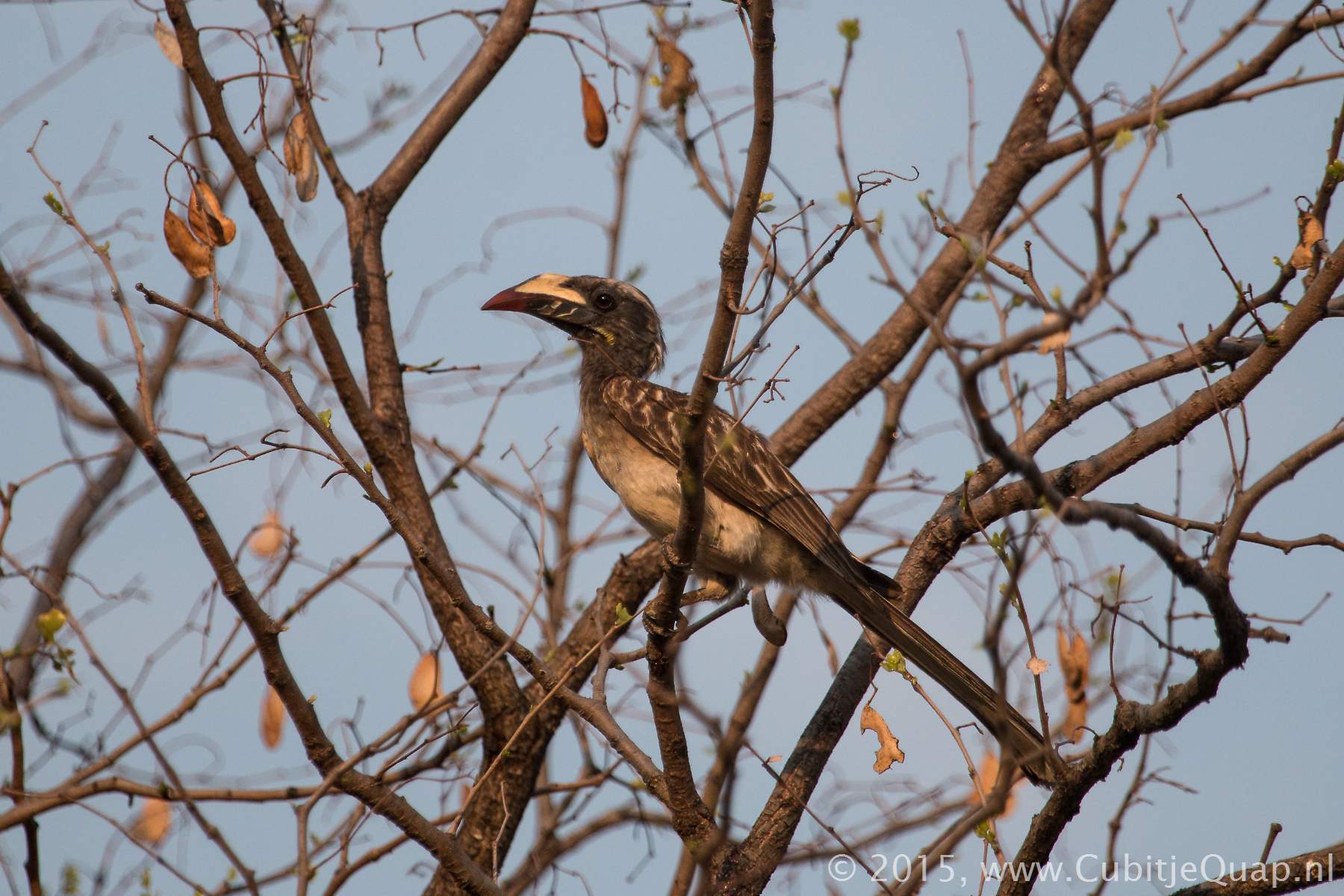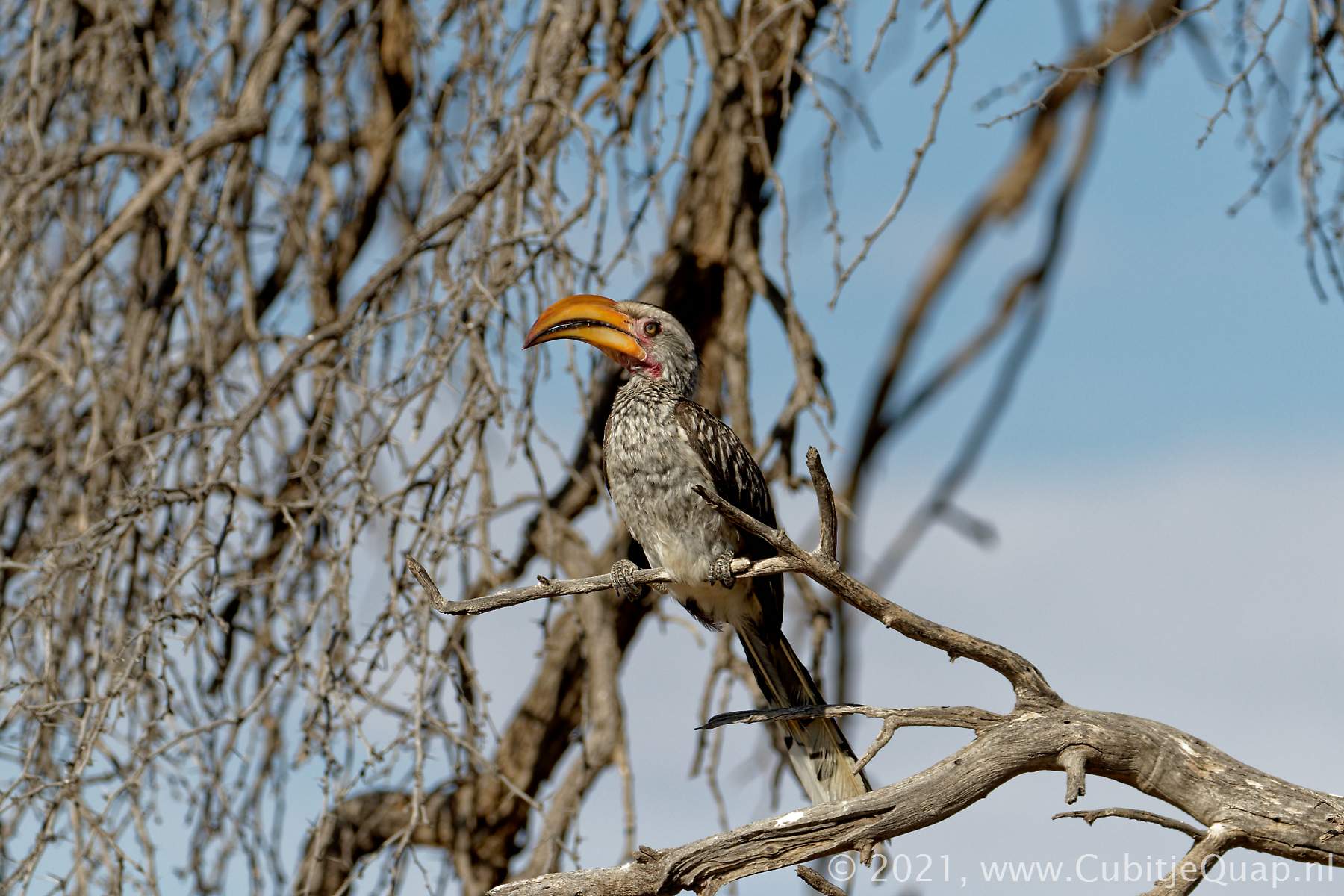Hornbills Information page
Description
Large to huge arboreal or semi-terrestrialomnivores of savanna and forest. Their most outstanding feature is their large bill with a well developed casque, despite the solid appearance their bills are light and honey-combed with air pockets. Their flight is laboured and undulating with much noisy flapping.They are omnivorous, with a number of invertebrates, small vertebrates and plant parts being taken. Arboreal species may hawk aerial insects. Ground-feeders will dig with the bill in dung, leaf-litter and soil and may resort to hawking or pouncing from perches when food is scarce.
Their breeding behaviour is astonishing and unique. They are monogamous and they nest in tree and rock cavities. The female incarcerates herself by blocking the entrance to the hole to a narrow slit (5 - 25 mm) using her own faeces, mud and crushed millipedes, food waste etc. (exception is Bucorvus, where cavity is left unsealed). The female remains imprisoned 8 - 11 weeks. During incubation and initial fledgeling period the female is totally dependent on the male for food. The female breaks out of the nest 20 - 30 days after the chicks have hatched and the chicks reseal the entrance and remaining imprisoned for another 25 - 30 days (except Bycanistes hornbills, where the female stays with the chicks).
Scientific names
Bucorvus = huge ravenTockus = onomatopoeic from calls
Birds in this category
Interesting links
Wikipediafatbirder.com




